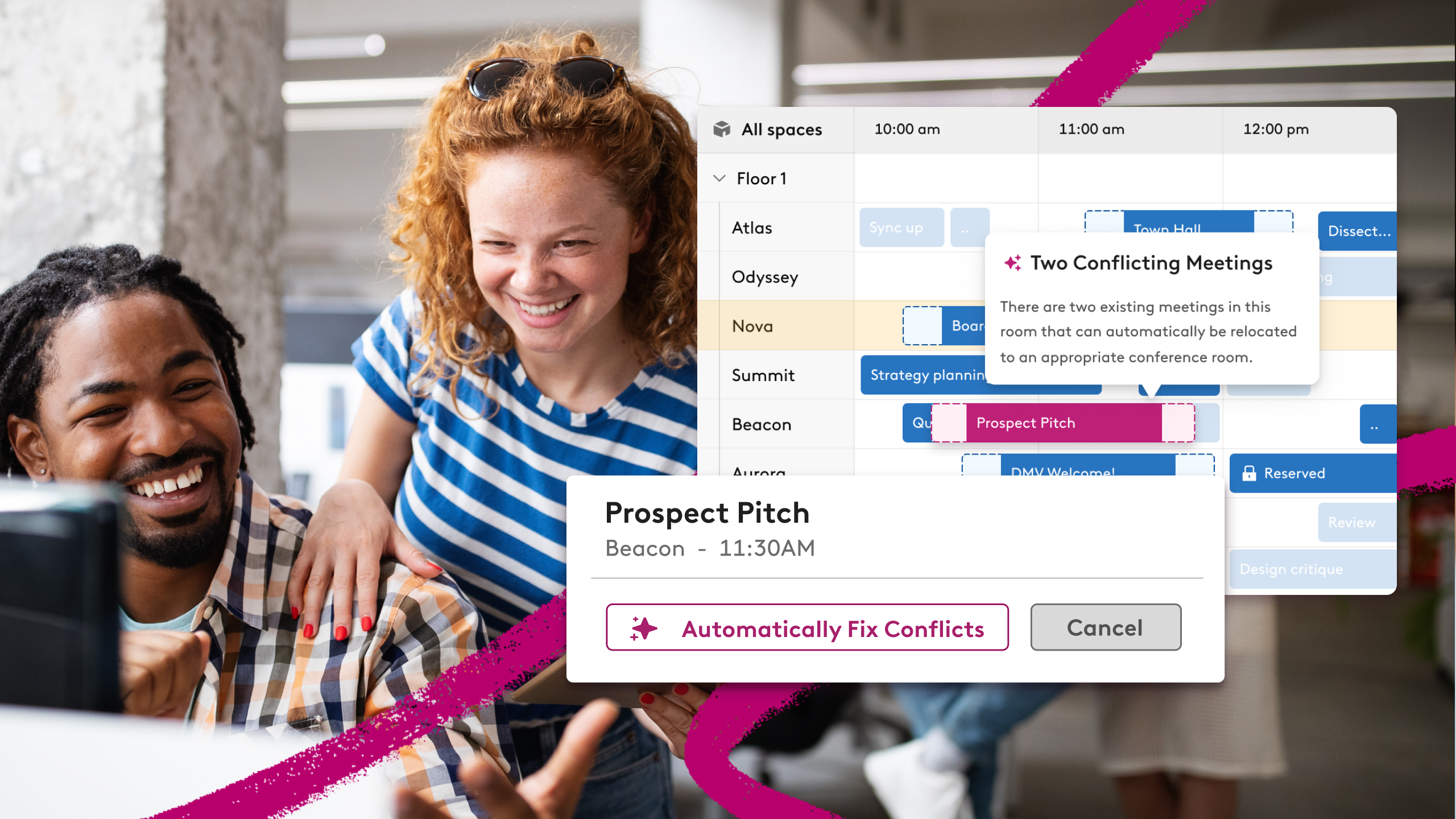10 Office Hoteling Best Practices

As hybrid and remote work increasingly become the norm, rather than the exception to the rule, companies need simple solutions for allocating in-office workspace.
Office hoteling offers employees and contractors a way to easily reserve workspace in advance, without having to worry if they’ll be able to find an open desk when they arrive at the office. When planning a transition to this model of workspace management, consider these office hoteling best practices outlined below.
1. Communicate, then implement office hoteling best practices
Abrupt change can be difficult for many people. When moving to an office hoteling model, don’t spring the new system on your employees. Instead, provide clear communication leading up to implementation, with a strong focus on the benefits of flexible workspaces.
Offer guidelines to managers about how to talk with their teams about the timeline, reservation system, and changes to in-office policies. Intentional, advanced communication helps implementation go as smoothly as possible.
2. Choose a robust, intuitive reservation system
Every employee in the organization needs to learn how to use the new reservation software for booking desks and conference rooms. That’s a big lift, but it doesn’t have to be overwhelming.
With an app-based reservation system, employees can easily book a workspace for a few days or just a few hours. Leadership can identify where and when employees are in the office, and teams can quickly pinpoint available meeting rooms to make collaborative work more efficient.
With a hot desking system, an employee might show up to work without knowing if there will be a desk available for them. An office hoteling system eliminates the stress and uncertainty of hot desking while maximizing space usage.
3. Make spaces functional and fun
An office layout should help everyone at the company do their best work. Start by outlining what types of spaces are needed:
- Do some employees require quiet, closed offices for focused work and phone calls?
- Will open spaces where small teams can collaborate be necessary?
- Are larger conference rooms for department-wide check-ins a must?
Offer an array of spaces that are both functional and aesthetically pleasing, and consider dividers or portable furniture for simple modification.
Additionally, don't forget to provide office supplies and tools for collaboration, like whiteboards or video screens. Ensure that each type of workspace is clearly delineated on the reservation system. When employees are booking a space, they should be able to find exactly what they need.
4. Offer personalized storage space
Employees want to feel comfortable at the office. For many, the concern about moving to an office hoteling model is the lack of a dedicated personal workspace. Leadership teams can eliminate this worry by offering secure storage solutions, such as lockers where employees can keep their belongings.
5. Invest in strong Wi-Fi
As the number of people in the office fluctuates throughout the day, a strong, reliable internet connection is critical.
Employees may be bringing multiple devices to the office, and since employees will be using their phones to book workspaces and connect with colleagues, companies can’t afford to have an internet connection that cuts out.
6. Prioritize health and safety
Simply put, employees should leave their workspace better than they found it. Provide clear guidelines for keeping workspaces clean, such as reminding employees to throw out all their trash and wipe down their desks before leaving for the day. Plus, make sure items like hand sanitizer and disinfecting wipes are readily available.
Effectively utilizing office hoteling software can help further good hygiene — managers can limit occupancy in certain areas or space out employees across the office.
7. Take advantage of cloud storage
Paper files take up valuable storage space, and they are inefficient when both onsite and remote employees need access to the same records.
By making information and documents accessible from anywhere, cloud storage can complement an office hoteling system. Employees can continue working on projects from home without needing to transport files to and from the office.
8. Track utilization
Underutilized space can be a waste of money. Using a reservation software’s reporting function, managers can gain insights into how office space is being used, discover patterns, and flag cancelations or unused workspaces.
Utilization reports can also identify particularly popular meeting rooms or areas, allowing leaders to see what’s working well. These analytics can inform future decision-making, creating a better, more productive workforce.
9. Continue to communicate
Once a new office hoteling system is in place, make sure managers have what they need to seamlessly implement company policies.
As additional employees and contractors come aboard, it should be easy for them to get up to speed. Information about reserving and using workspaces should be easily accessible for new team members.
10. Be open to improvements
With access to simple and user-friendly reservation software, employees are empowered to do their best work. Teams may discover new, innovative ways to accomplish their goals as office hoteling becomes the norm.
Managers should be open to employee feedback, whether that’s adding more collaborative workspaces or reorganizing cloud storage. Small changes can go a long way in optimizing the modern workplace.
Learn how to effectively manage office hoteling with Robin
Today’s teams need powerful tools that accommodate hybrid work. Robin offers a single platform to book spaces, schedule meetings, and manage employees, contractors, and guests while integrating seamlessly with existing apps and tools. For more information about Robin’s office hoteling solutions, start your free trial today.













